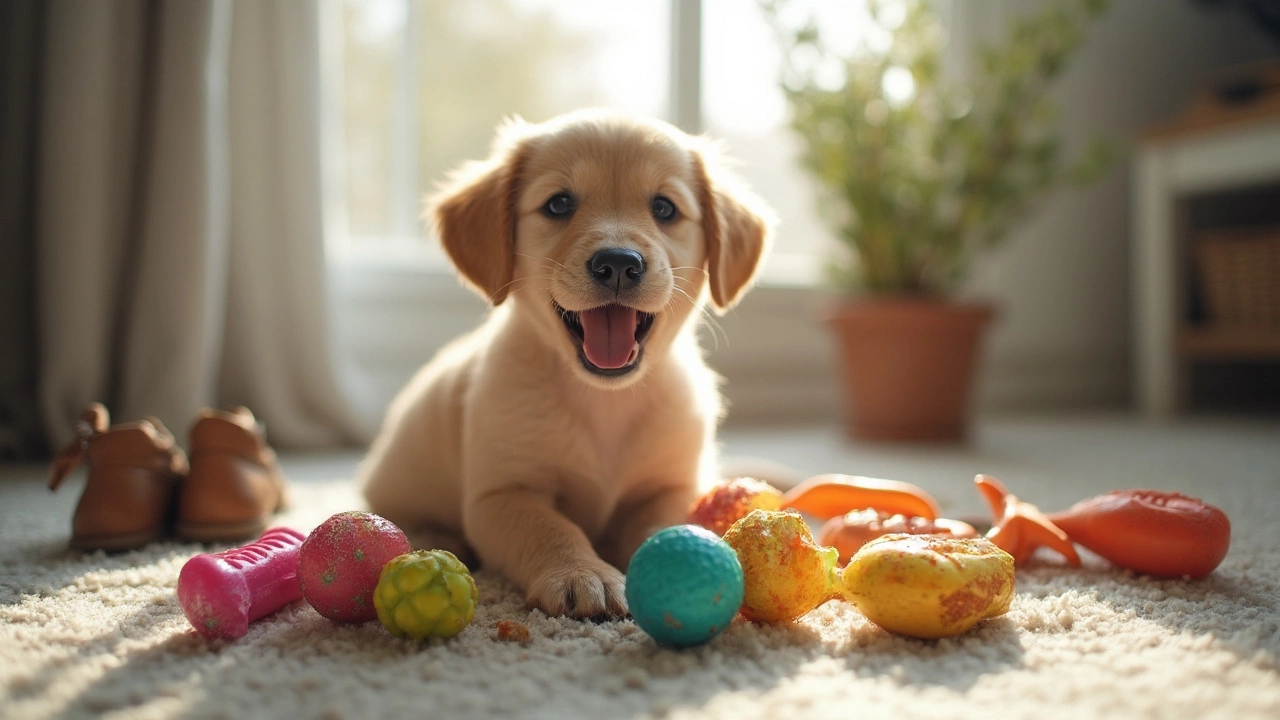Chew Toy Tips: Keep Your Dog Happy & Safe
If you’ve ever watched a pup gnaw a shoe or a sock, you know how important the right chew toy is. The right toy stops destructive habits, helps clean teeth, and gives your dog a safe outlet for chewing. Below are the basics you need to choose, use, and care for chew toys without the guesswork.
Pick the Right Toy for Your Pup
Start by matching the toy to your dog’s size and chewing style. A big, strong chewer needs a tough rubber bone or a thick nylon rope; a gentle chewer can enjoy softer plush toys. Look for a toy that’s larger than your dog’s mouth – if it fits inside, it could be a choking hazard. Also, check the material: FDA‑approved rubber, non‑toxical nylon, or natural fibers are safe choices.
Don’t forget the age factor. Puppies have softer teeth and need softer textures, while adult dogs can handle harder stuff. If your dog is teething, a cold, damp washcloth frozen for a few minutes works great for soothing gums before you transition to a real toy.
Maintain & Rotate Toys for Long‑Lasting Fun
Even the toughest toy breaks down over time. Inspect toys daily for cracks, loose ends, or shredded pieces. Toss any toy that shows wear – it can become a choking risk or cause oral injuries. A quick rinse after each play session keeps germs at bay, especially if your dog likes to chew outside.
Rotate toys every week or two. Dogs get bored fast, and a fresh toy feels like a brand‑new surprise. Put a few toys away in a basket, then bring them back later. This simple trick reduces destructive behavior because your dog always has something “new” to focus on.
When you buy new toys, stick to reputable brands that list material details and safety certifications. Avoid toys with small parts that can be swallowed, like squeakers that can detach. If you’re unsure, choose a plain chew stick or a solid rubber ball – they’re simple and safe.
Finally, use toys as training tools. Offer a chew toy when you want to redirect a bad habit, like chewing on furniture. Over time, the dog learns that the toy is the right thing to grab. Praise your dog each time they choose the toy; positive feedback makes the habit stick.
Following these chew toy tips means fewer broken shoes, healthier teeth, and a happier pup. Keep the toys sized right, inspect them often, and rotate the selection for continuous excitement. Your dog will thank you with wagging tails and less mischief.
Puppy Chew Toys: What Should I Give My Puppy to Chew On?
Picking the right chew toys can save your sanity and your furniture when you have a teething puppy at home. This article breaks down which chewing items are safe, which ones to avoid, and hands-on tips to keep your pup happily occupied. Explore how chew toys support healthy teeth and behavior, and get smart ideas for both store-bought and DIY options. You'll also learn signs that a toy isn't safe, so your puppy stays happy and healthy. All practical info and real-life advice, straight from someone who's been there.
